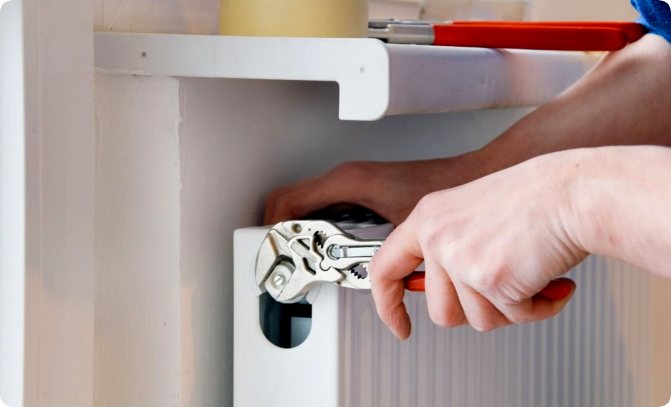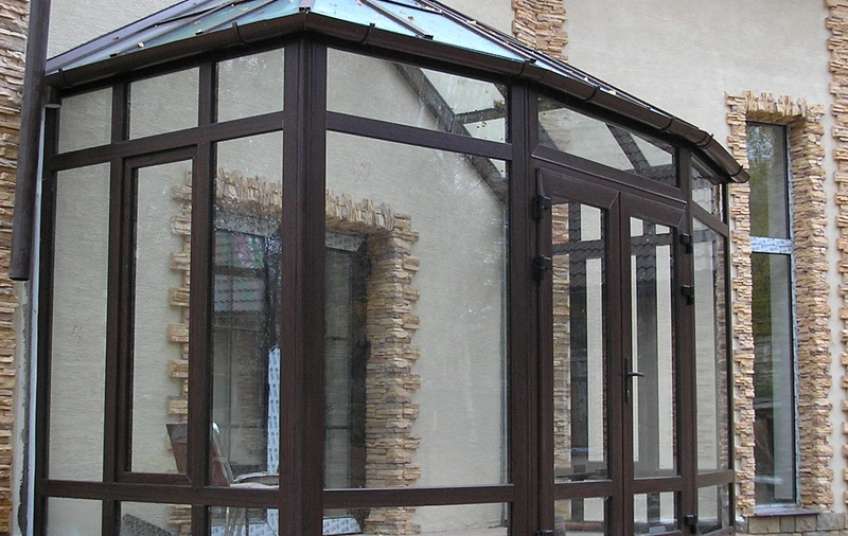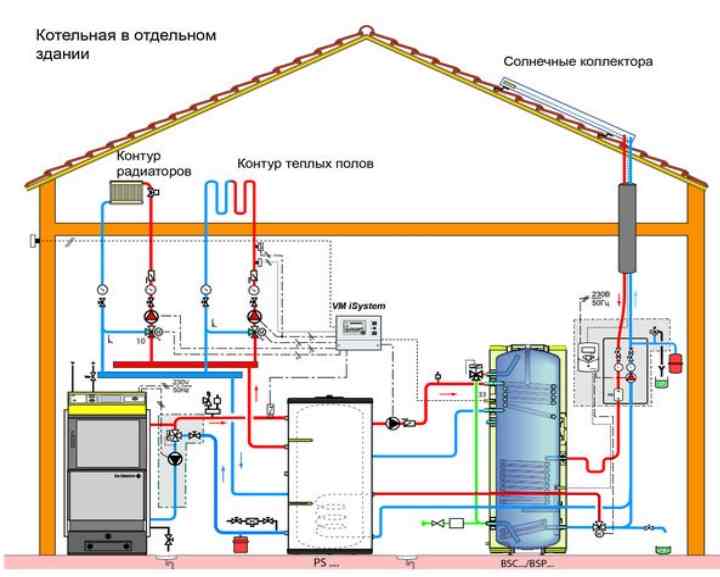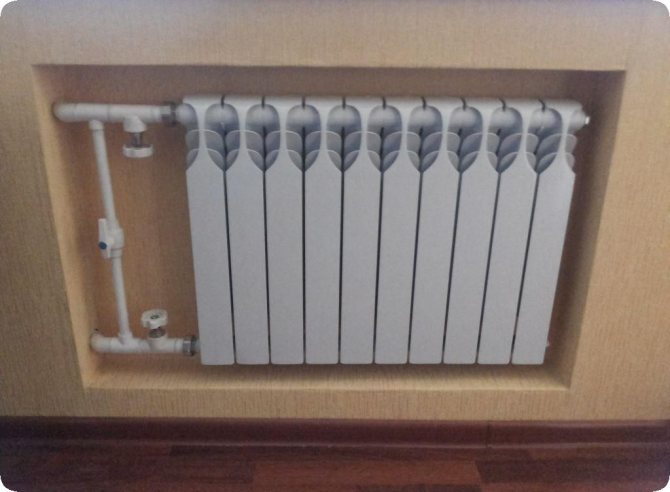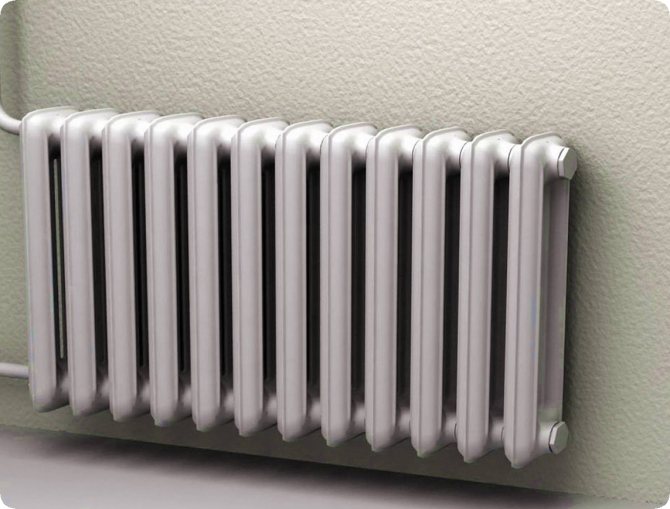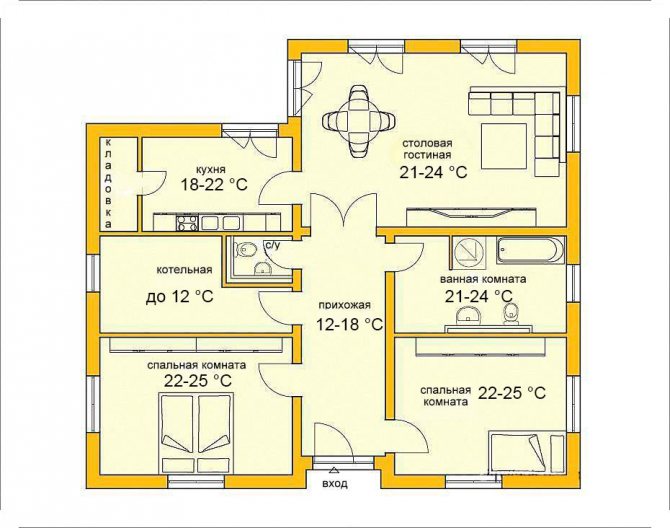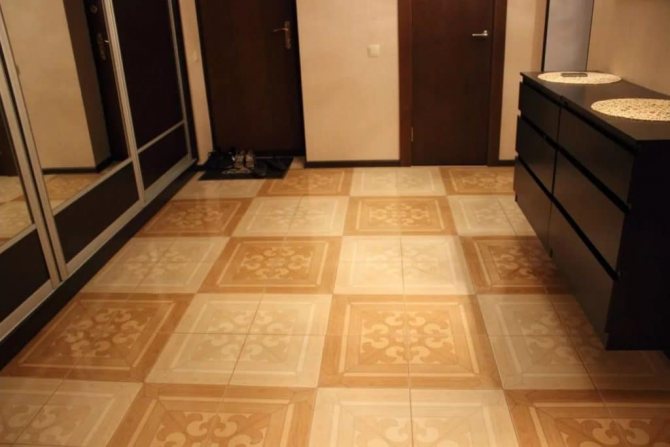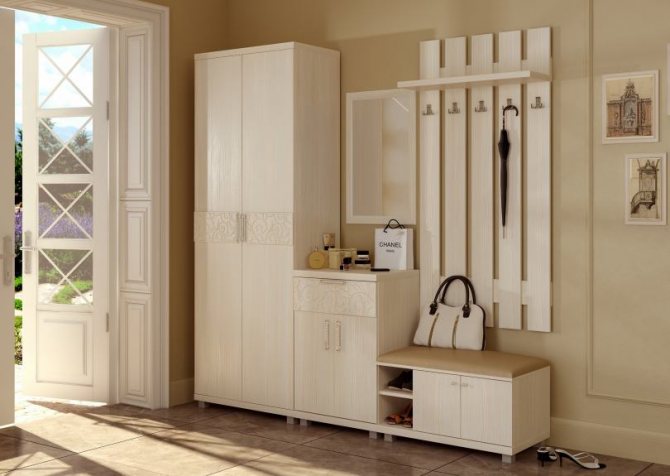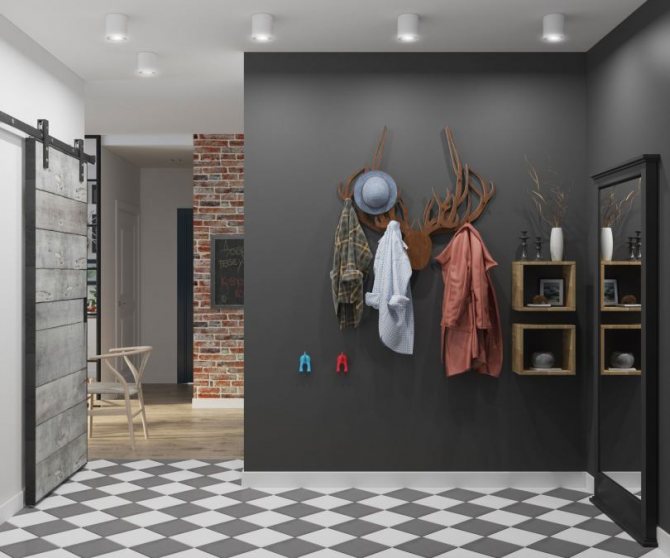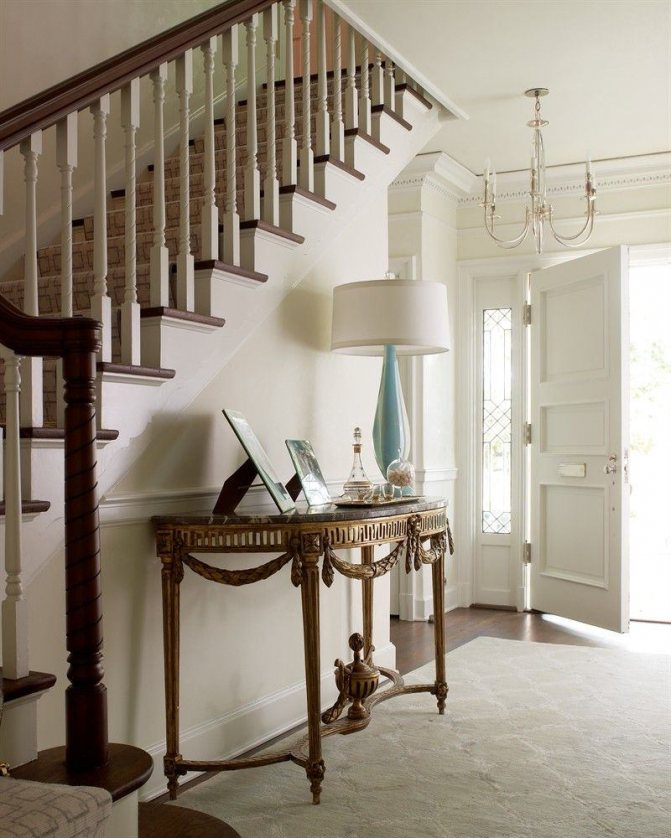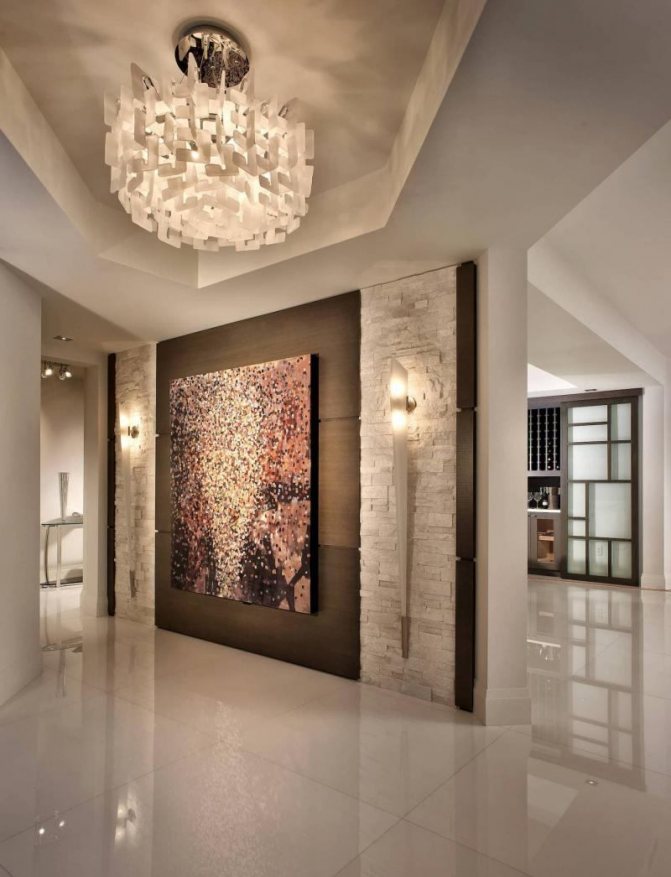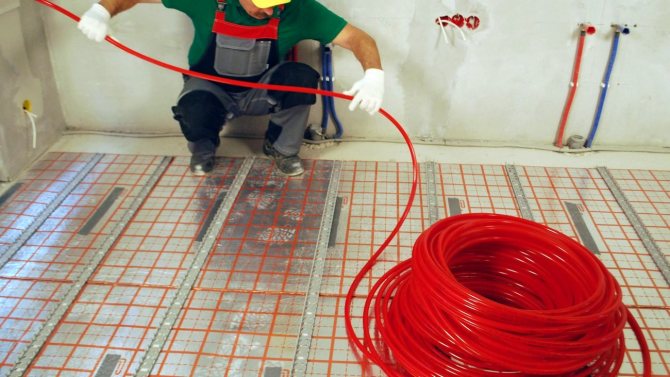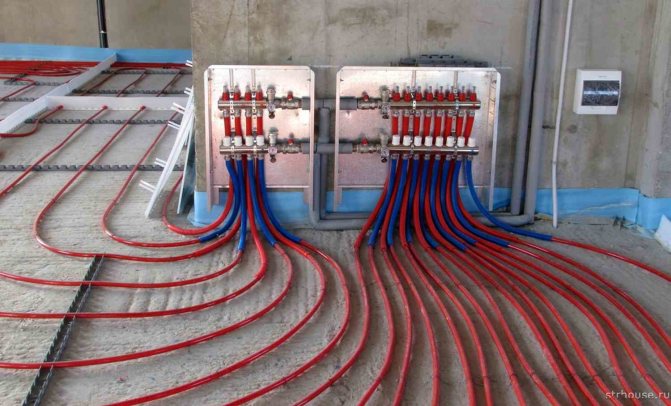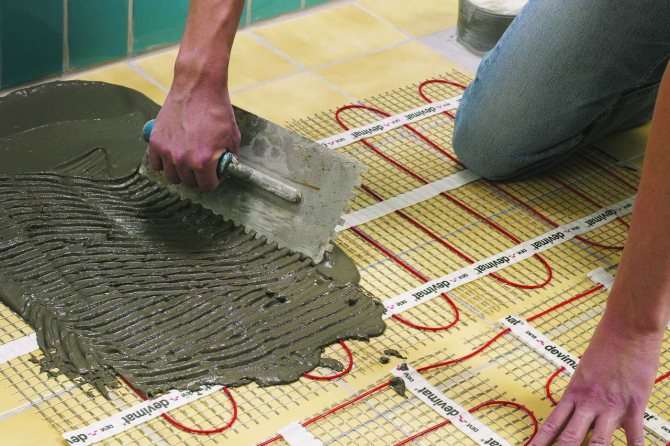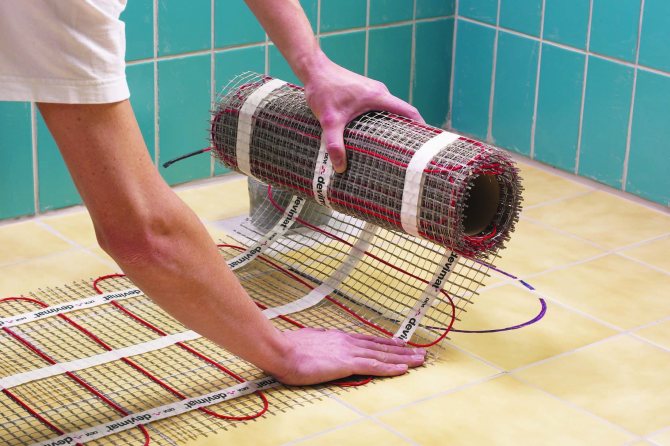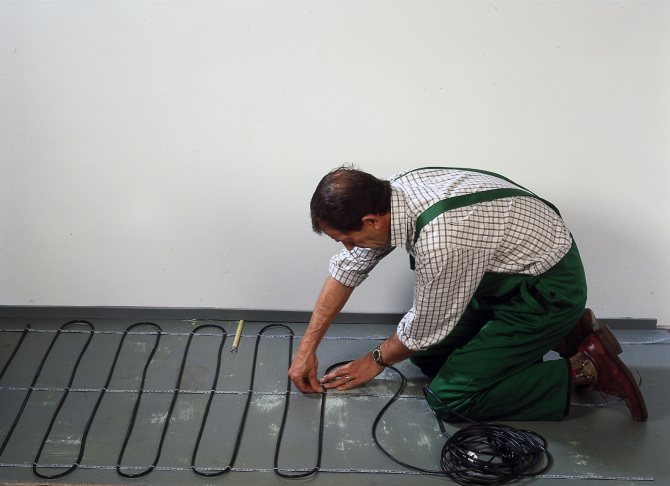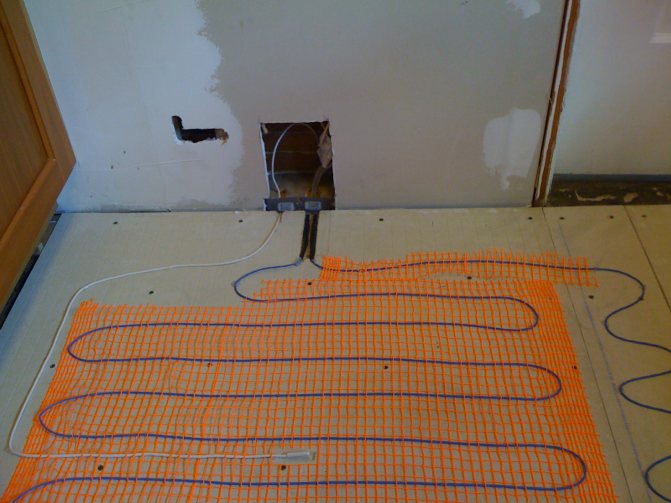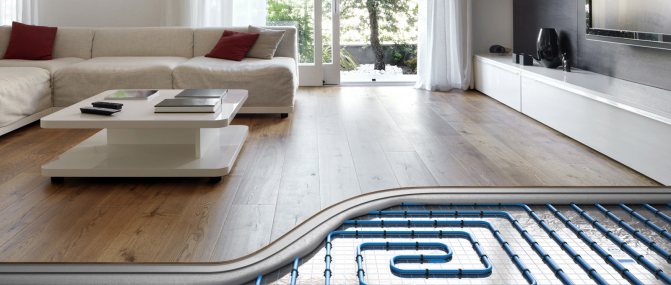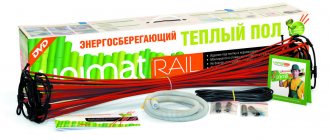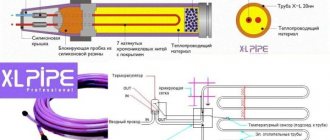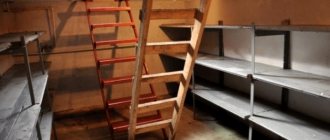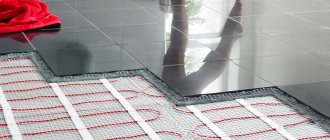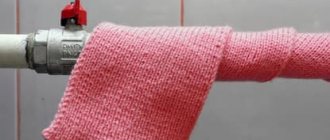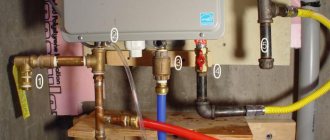Cause of cold floors
The batteries are hot, do not touch it with your hand, but you have to walk around the apartment in woolen socks or slippers. The fact is that the batteries heat the places near them, the heat, according to the law of physics, rises up and circulates closer to the ceilings, while the floors remain cold.
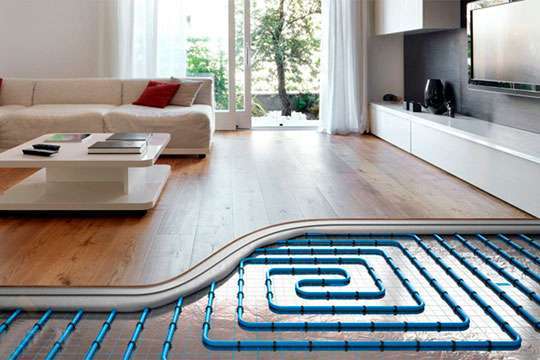
Even the installation of additional radiators does not save you from such a situation, the apartment will become hot, dry, there will not be enough oxygen for full breathing.
Restrictions for additional heating
But for the installation of underfloor heating in apartments, there are restrictions from SanPI.
In standard city apartments, it is not allowed to replace batteries for heating with water, since connection to central heating is not possible. This is prohibited by the housing code, and the neighbors from below will not give consent.
Residents of the first floor, if no one lives below and there are no industrial premises, can allow floor heating with hot water in pipes. In private houses with individual autonomous heating, the arrangement of water heating is allowed, for them this is an excellent option.
We recommend: What is Knauf underfloor heating characterized by?
Reasons for arranging heating in the hallway
The entrance hall is considered the place that determines the first opinion of guests about the house. Therefore, it is worth thinking about materials for finishing the room, because a properly selected design creates a sense of harmony. Well, the warm floor in the room will add comfort.
If it is snowing or raining outside, then a warm floor helps to eliminate moisture - it is used to dry shoes. Moisture is unacceptable for shoes, and if placed on a warm surface, it will be able to dry evenly.
Coming home from the street, it's nice to take off your shoes and step on the heated floor. It is laid under such popular flooring materials for the corridor as laminate, tiles, porcelain stoneware.
Do you need a warm floor?
Of course you do.
Firstly, these floors are more energy efficient. With them, a large area heats up at a lower cost.
Secondly, such floors evenly heat the air over the entire area of the room, without overdrying it, and eliminate moisture.
Thirdly, without heating devices, the interior in the room looks completely different, it is easier to clean, there is no source of dust "in the accordion" of the radiator.
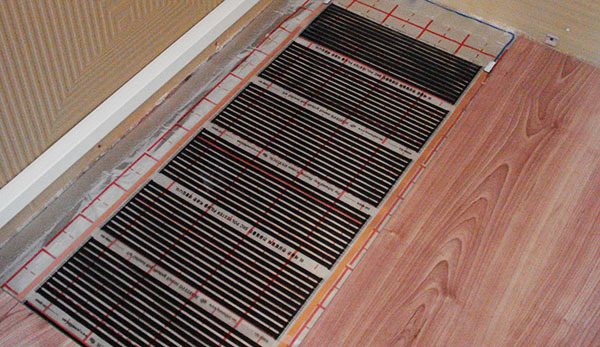

When the room is heated from below, from the floor, then much less energy from electrical appliances is required to warm the room, and the effect is greater.
This means that this proves that the arrangement of a warm floor is more effective than batteries of the same type. Heating a room on water is much more efficient than standard batteries in apartments, electric mats, cables, infrared films heat the room better than electric radiators.
Advantages of underfloor heating in the hallway
- Economy. The design heats up the area as much as possible, as it is equipped with thermostats that maintain the proper temperature for the owner of the house, without consuming additional energy.
- Environmental friendliness. Dust does not rise into the air and does not penetrate into the respiratory tract of a person, as it happens when a room is heated with radiators.
- Versatility. The heating structure does not interfere with the furniture arrangement, does not take up space. To do this, you must choose any suitable system: water, electric or film.
- Practicality. Warming up protects from drafts coming from the front door. The air in the room is heated to a height of one and a half meters throughout the entire territory. Right there, at the entrance, you can refine a warm place for a pet.
Benefits of underfloor heating
- They create comfort, especially they help out when they turn off the central heating in the early spring, and turn it on late in the fall;
- The general view of the interior looks aesthetically pleasing, the wires are not visible, they remain under the floor covering;
- Environmentally friendly and harmless;
- They are characterized by versatility. They can be equipped with any floor covering: linoleum and parquet, laminate and ceramic tiles;
- Heating mode can be adjusted with a special thermostat;
- Good for the health. In rooms with warm floors, adults and children are rarely exposed to colds.
Where in the apartment do you need underfloor heating?
The area covered with ceramic tiles requires mandatory heating.
Bathroom
Walking barefoot on cold tiles in the bathroom is not entirely pleasant. Although the air in the bathroom becomes warm from the steam of hot water, it is possible to catch a cold after taking water procedures, this is especially true for young children.
Kitchen
Underfloor heating is essential in the kitchen. A woman spends several hours cooking in it, and she needs comfortable conditions.
Children
The third place in the apartment where you need to install floor heating is the nursery, if the flooring is made of laminate or linoleum. Children love to play on the floor and often catch colds afterwards.
We recommend: What is the layout of the underfloor heating mixing unit?
It is necessary to equip warm floors in the nursery to preserve the health of the kids. It is recommended to install an infrared film in the nursery, unlike others, it does not require a concrete screed.
Loggia
On an insulated balcony or loggia, it is imperative to equip warm floors.
The floors in the loggia, even if it is insulated, are always cold. Heaters will not be able to provide it with the required heat. The floors will be so cold that it will be uncomfortable even with woolen socks.
And no heating device will be able to warm them up, because the heaters heat the air around them, and the heat goes up to the ceiling.
Hallway
After a cold street, it is very pleasant for your feet to be in a hallway with warm floors. The air from the floor heating will be a kind of thermal curtain against the cold air from the hallway doors. And the shoes will dry here in the morning without additional hassle.
Living room
While at home, people spend most of their time in the living room. Sitting on the couch, in an armchair, they read books, watch TV, do their favorite things at their leisure. Here guests are received, among whom there may be persons susceptible to colds.
It is recommended to equip a warm floor in the living room not over the entire area of the room, but only in places where people will be. That is, you should not mount appliances for heating a room under sofas, armchairs and other furniture.
Are infrared thermal heaters suitable for the hallway?
IR heaters for an apartment (house), premises - selection, characteristics
Reply
Posts: 14 • Page 1 of 2 • 1,
Are infrared thermal heaters suitable for the hallway?
the guest »14 Mar 2012, 11:56
I heard that infrared thermal heaters have a very long service life, at the same time they have a low price and small dimensions. Houses from the entrance are blowing strongly in winter, we want to install additional electric heating in the hallway, we choose a heating system. Is a thermal infrared heater suitable?
the guest
to come back to the beginning
Are infrared thermal heaters suitable for the hallway?
Sergey N »14 Mar 2012, 12:19
Thermal infrared heater is suitable for use in the hallway, it is rightly noted, it is simple and inexpensive, and has a long service life of up to 25 years. In addition, the small dimensions allow you to install the heater almost anywhere in the apartment without reducing the usable space of the room.
The most economical gas heaters + reviews - https://www.optcentre.ru/topic/3185-otzy ... # entry4007
Sergey N
Messages: 2684 Registered: 11 Mar 2012, 23:18 Where from: Kazan
to come back to the beginning
Are infrared thermal heaters suitable for the hallway?
Rikota »05 Apr 2013, 13:48
If it blows strongly from the entrance, you need to start solving the problem by insulating the front door in the apartment, installing seals, getting rid of cracks along the contour of the door frame. By installing a heater, the problem of increased infiltration (drafts, blowing from the entrance) cannot be solved in principle. Its function, the heater, is to create a zone of comfortable temperature, and not fight in the air currents. Rikota
Messages: 994 Registered: 11 Mar 2013, 12:41
to come back to the beginning
Are infrared thermal heaters suitable for the hallway?
Anatoly »Apr 14, 2013 12:49 pm
Ricot's rights, there is no point in heating the cold air flow from the street into the hallway. It is possible to make a first approximation of the calculation of possible heat losses through the cracks in the door. For slots of 0.5 cm and at air velocities up to 4 m / s, heat loss due to infiltration can reach up to 1 kW, and in some cases up to 1.5 ... 2 kW. Plus, the non-isothermal nature of the jets and the presence of drafts give prerequisites for seasonal colds. Fresh air from the street is needed, but not in this way, not in this way. This type of heaters has a wide range of required power from 0.1 to 1.2 kW. It is believed that such heaters are auxiliary and, therefore, they are not equipped with thermostats that allow automatically maintaining the set temperature in the hallway. This disadvantage lies in the fact that there must be another heater, but with a thermostat. Structurally, the heat transfer surface is made in the form of a flat sheet. The temperature of the working surface is 75 ... 85 C. According to the available information, such a heater gives off heat to the environment mainly in the form of infrared radiation. The share of radiant heat reaches 85% of the total flux. However, it is not clear why then flat oil heaters, which have an outer surface temperature of about 130 C, are not referred to as IR heaters ??? The latter is irrelevant. But just wondering !!! And the cracks must be sealed. Self-adhesive soft profiles of various configurations and colors are now available, designed specifically for these purposes. I myself use such tapes for the front door. But I have a gap in the panel, and in some other places I still left a gap open. Why??? This is a separate conversation. Anatoly
Messages: 1707 Registered: Apr 03, 2013 1:23 am
to come back to the beginning
Are infrared thermal heaters suitable for the hallway?
Sergey N »06 May 2013, 13:46
These are infrared convector heaters. THERMIK can be put at home, in the country, in the office. Heating elements are heating elements, I attach a photo of the heater for greater clarity. If you have a room - a hallway with a large air movement in it, I think it is better to buy an IR device, IR rays are more difficult to take out of the room than heated air masses. \ Investments
The most economical gas heaters + reviews - https://www.optcentre.ru/topic/3185-otzy ... # entry4007
Sergey N
Messages: 2684 Registered: 11 Mar 2012, 23:18 Where from: Kazan
to come back to the beginning
Are infrared thermal heaters suitable for the hallway?
Anatoly »06 May 2013, 19:54
[quote = "Anatoly"] This type of heaters has a wide range of required power from 0.1 to 1.2 kW. Structurally, the heat transfer surface is made in the form of a flat sheet. The temperature of the working surface is 75 ... 85 C. However, it is not clear why then flat oil heaters, which have an outer surface temperature of about 130 C, are not classified as IR heaters ??? But why??? Thermic, only as the main heater of the hallway for a number of reasons will not work !!! Thesis ... "If you have a room - a hallway with a large movement of air in it, I think it is better to buy an IR device, IR rays are more difficult to take out of the room than heated air masses" - erroneous, "horses, people mixed up in a heap" ... is ultimately about the balance of heat flows and only ... Anatoly
Messages: 1707 Registered: 03 Apr 2013, 01:23
to come back to the beginning
Are infrared thermal heaters suitable for the hallway?
Bibikin Ivan »05 Jul 2013, 08:43
Don't be smart, Anatoly! If there is a large air flow in the room, then it is necessary to use IR devices / This is done at airports, train stations, sometimes in stores. The entrance hall is not as ventilated as the airport, therefore, by and large, any device can be installed in it. I think the key factor here would be the presence of a large number of doors and cracks, a corridor, etc.
We are moving to live on a desert island! With us?! - https://www.neobitaemyi.ru/
Bibikin Ivan
Messages: 1662 Registered: May 16, 2012, 14:10 Where from: Moscow
to come back to the beginning
Are infrared thermal heaters suitable for the hallway?
Rikota »09 Aug 2013, 12:51
Bibikin Ivan wrote: If there is a large air flow in the room, then it is necessary to use IR devices
Doubtful, I tell you, thesis. Justify))) In fact, when DUETS fight it is necessary with this factor of discomfort, and not raise the temperature. And that decision from the category “does your head hurt? drink a laxative, it will distract you from the headache. ”Perhaps, so that there is no blowing from the entrance, it would be nice to insert all the windows in this very entrance, insulate and seal the door and get rid of cracks if possible. Then it won't blow.
Bibikin Ivan wrote: The entrance hall is not as ventilated as the airport, so any device can be installed in it.
Of course, you can install anything. But how necessary is it at all?
Bibikin Ivan wrote: I think the key factor here would be the presence of a large number of doors and cracks, a corridor, etc.
For what? Express your thought more clearly. Rikota Messages: 994 Registered: 11 Mar 2013, 12:41
to come back to the beginning
Are infrared thermal heaters suitable for the hallway?
Anatoly »11 Aug 2013, 12:44
The guest wrote: I heard that thermal infrared heaters have a very long service life, with a low price and small dimensions. Houses from the entrance are blowing strongly in winter, we want to install additional electric heating in the hallway, we choose a heating system. Is a thermal infrared heater suitable?
Earlier it was my opinion that Thermik, only as the main heater of the hallway, for a number of reasons will not work !!! Here it is desirable to focus on a specific situation when the hallway looks like a wind tunnel in TsAGI. Heat exchange between surfaces heated by infrared radiation and the flow of cold air will simply nullify the feasibility of installing infrared heaters in the hallway. In this situation, it is doubtful to install Thermik even as an additional electric heating. What is the way out of this situation ??? Get rid of the initially strong blast, and then return to the additional heating of the hallway. Anatoly Messages: 1707 Registered: 03 Apr 2013, 01:23
to come back to the beginning
Are infrared thermal heaters suitable for the hallway?
Bibikin Ivan »15 Aug 2013, 09:37
As practice shows, drafts are not always evil. In apartments where ventilation is very poor and there are plastic windows, for example, a small door draft can create good ventilation against the stale air of the room. Here in my apartment everything is sealed off, so for 9 months a year the windows are wide open. Which, too, is not a very system according to the logic of Ricota and other specialists.
We are moving to live on a desert island! With us?! - https://www.neobitaemyi.ru/
Bibikin Ivan
Messages: 1662 Registered: May 16, 2012, 14:10 Where from: Moscow
to come back to the beginning
Reply
Posts: 14 • Page 1 of 2 • 1,
Back to Infrared Heaters
Who is at the conference now
Registered users: no registered users
Switch to mobile style
Where heated floors are not needed?
In the sleeping room, a person sleeps, resting after a hard day.To benefit from a night's sleep, a person must sleep in a cool room with a temperature within 18 degrees.
Therefore, it is impractical to install underfloor heating in all rooms of an apartment and house, somewhere they are not needed at all, even harmful. The issue of additional heating using a floor heating system must be approached reasonably.
In a room with dry, excessively warm air, a person will feel lethargic in the morning, some will suffer from headaches. Therefore, the only place in the apartment where it is necessary to abandon floor heating is the bedroom.
We recommend: Should I use Penoplex for underfloor heating?
Warm floors in the bath
It is advisable to equip floor heating in the dressing room and washing room. Why? In the bath, heated floors create a comfortable microclimate during water procedures, dry wood, preventing biological destruction from fungal plaque.
The bathhouse is characterized by high air humidity, the floors in it get very wet. To ensure the safety of walls and floors from decay, to prevent the formation of fungi and mold, it is necessary to dry the bath. Especially in the cold period, the floors, even in a hot bath, are cold.
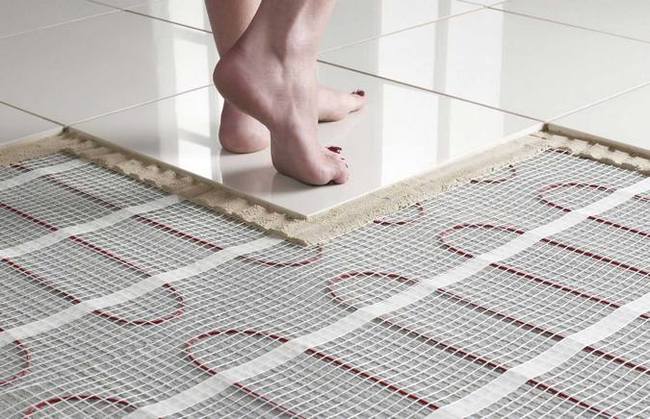

For a bath, heating with a water floor is best suited, which is mounted between the base (concrete or wooden) and the floor covering.
Hot water from a gas boiler or central heating circulates through flexible plastic pipes and heats not only the floors, but also the air in the room. The water floor is economical, environmentally friendly, there is no electromagnetic radiation in it.
But in winter time it is necessary to monitor the timely discharge of water from the pipes. The energy of the sauna stove can be used as a heat source. The pipes are laid with a snake, double snake, snail or corner snake.
House heating schemes
For heating distribution, 2 schemes are used:
- one-pipe;
- two-pipe.
The proposed heating systems have strengths and weaknesses.
One pipe system
This is the easiest and most economical way to lay a heating system. All batteries are connected in series, and the last section is connected to the boiler. The coolant moves around the ring.
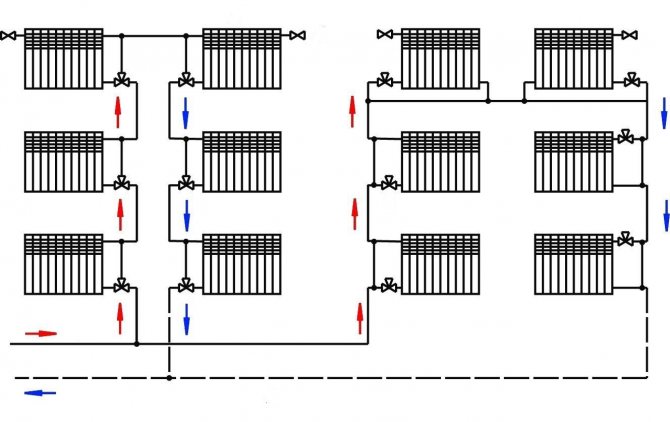

The main advantage of such a connection is ease of installation. It is easy to design, even for a beginner. Installation does not require additional elements - a manifold and distribution systems.
The disadvantages include uneven heating of the batteries. The first sections are heated most efficiently, and the cooled coolant is supplied to the last radiators.
The problem is solved by increasing the power of the heating boiler. But in this case, the first radiator will be excessively hot. 2nd solution - increasing the number of sections in the last radiators. To cope with the situation will help to increase the speed of the coolant using an electric pump. But these are additional expenses for equipment, maintenance and increased pressure in the system.
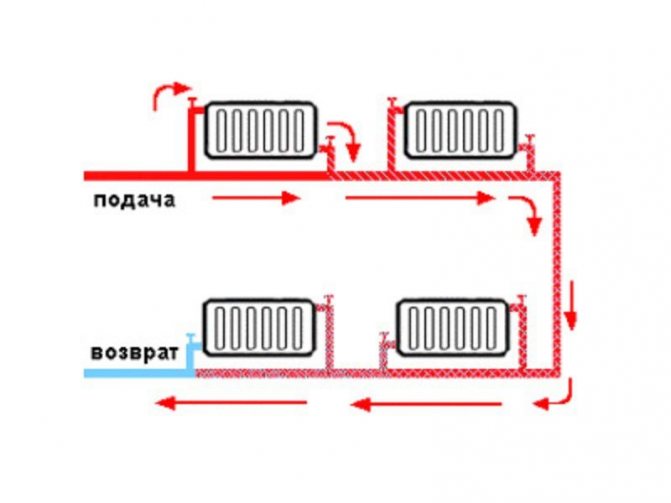

Note! One-pipe heating distribution shows high efficiency with 3-4 radiators. For a wider heating system, a two-pipe wiring is used.
Two-pipe system
Such a scheme is much more effective, but it requires additional expenses for pipes and a manifold.
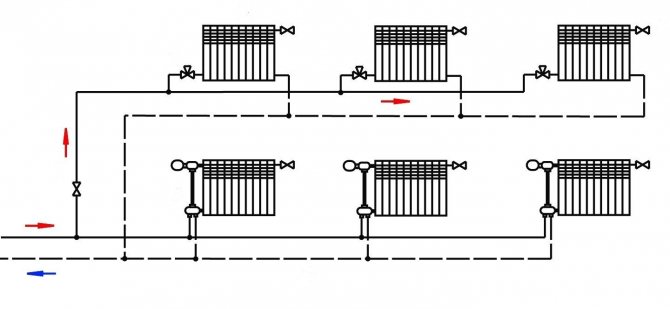

Each radiator has its own inlet for hot water and an outlet for cooled coolant. The batteries in the house warm up evenly.
- A collector is installed in a separate room (usually in the attic). It is a multi-pipe device. The collector regulates the flow of the coolant through the pipes.
- Locking elements distribute heat through the pipes, do not allow different sections of the batteries to intersect. Thanks to this system, the cooled coolant cannot enter the adjacent section and is discharged into the boiler.
- The heating elements increase the temperature of the supplied coolant to the required level, and send it to the collector for further distribution.
Note! The two-pipe scheme does not require additional pumps, since all radiators are heated evenly. It is allowed to use hot water for domestic purposes - bathing, washing dishes, and other needs.


The main disadvantage of a two-pipe wiring is the additional costs for pipes, the presence of a collector and heating installation skills.
Both schemes use hot water heating. This coolant is the most accessible and easy to replenish.
Underfloor heating system common and differences
Now stores offer different types of equipment and appliances for installing underfloor heating in homes. It is necessary to carefully study the useful information about the system and make the right choice. Electrical versions have negligible electromagnetic radiation.
But heating cables, mats can be installed anywhere. Water-based underfloor heating is suitable for new buildings with autonomous heating systems or in private residential buildings.


Such floors are installed in country houses, where you can choose any system: water or electricity. Water-type installation is possible under any type of floor covering.
Those wishing to equip themselves with additional floor heating can study video materials on the Internet.
You will not surprise anyone with the technology of space heating with the help of warm floors, it has become popular for a long time.
- Similar posts
- How to make a warm floor from a heated towel rail?
- Features of underfloor heating made of metal-plastic pipes
- How to install a warm floor in a garage?
- What is the characteristic of a warm floor Rehau?
- Features of the Korean underfloor heating
- How to install the underfloor heating film?

